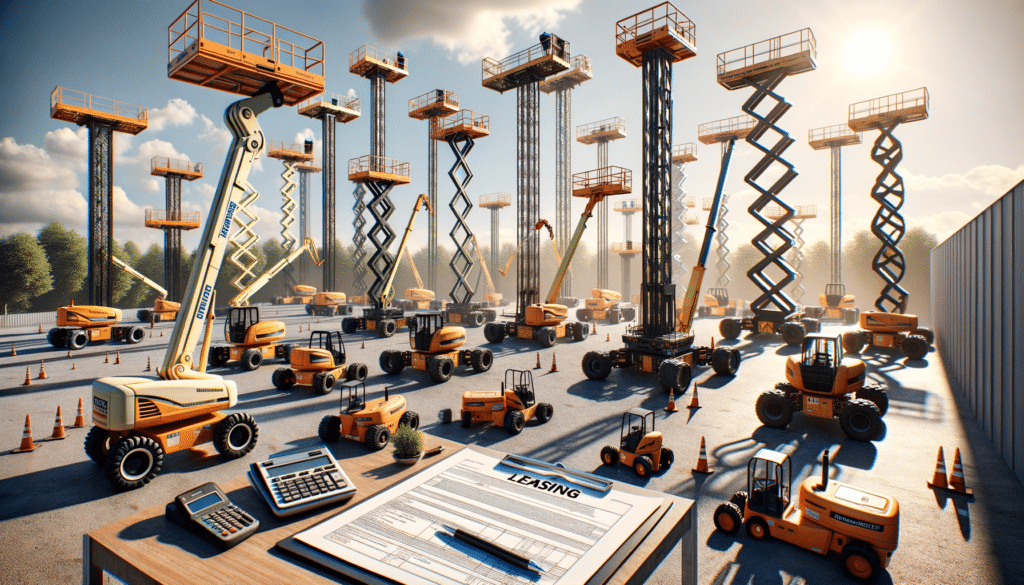Understanding the Rent to Own Model for Boom Lifts
In the construction industry, boom lifts are essential for reaching high and difficult places, whether it’s for painting, repairs, or installation. However, the high upfront cost of purchasing such equipment can be prohibitive for many contractors, especially small businesses and startups. This is where the rent to own model comes into play, offering a practical alternative.
Rent to own agreements allow businesses to rent equipment with the option to purchase it after a certain period. This model provides several benefits, including:
- Lower initial costs: Businesses can access the equipment they need without paying the full purchase price upfront.
- Flexibility: Contractors can use the equipment for a set period before deciding if they want to commit to a purchase.
- Testing period: Companies can assess the equipment’s performance and suitability for their needs before buying.
These agreements typically include maintenance and service, which can further reduce costs and ensure the equipment remains in good working condition. For many contractors, this model is a strategic way to manage cash flow while still having access to vital equipment.
Exploring Construction Lift Leasing Options
Leasing is another popular option for acquiring construction lifts, offering a different set of advantages compared to outright purchase or rent to own models. Leasing can be particularly beneficial for projects with a defined timeline or when the equipment is needed for a specific task.
Construction lift leasing options generally include:
- Operating leases: These are short-term leases that allow businesses to use the equipment without the intention of ownership. They are ideal for temporary projects.
- Finance leases: These are longer-term leases where the lessee has the option to purchase the equipment at the end of the lease term.
Leasing can be advantageous for several reasons:
- Cost management: Leasing can help companies manage expenses by spreading costs over time.
- Access to the latest technology: Regularly leasing equipment allows businesses to use the latest models without the depreciation concerns of ownership.
- Tax benefits: Lease payments are often tax-deductible as business expenses.
These options provide flexibility and financial predictability, making them an attractive choice for many in the construction industry.
Jobsite Equipment Finance: Navigating Your Options
Financing jobsite equipment is a crucial consideration for construction companies looking to expand their capabilities without straining their budgets. Equipment finance can take various forms, each with its own benefits and considerations.
Common financing options include:
- Equipment loans: These loans allow businesses to purchase equipment by borrowing the necessary funds, which are then repaid over time with interest.
- Equipment leasing: As previously discussed, leasing offers a way to use equipment without owning it, with potential purchase options at the end of the lease term.
- Line of credit: A flexible financing option that provides access to funds as needed, which can be particularly useful for managing cash flow and unexpected expenses.
When considering financing options, businesses should evaluate:
- Interest rates and terms: Understanding the cost of borrowing is essential for making informed financial decisions.
- Ownership and depreciation: Deciding whether ownership is important can influence the choice between leasing and loans.
- Cash flow implications: Ensuring that monthly payments align with revenue streams is crucial for maintaining financial stability.
By carefully assessing these factors, construction companies can choose the financing option that best supports their operational and financial goals.
The Benefits and Challenges of Rent to Own Boom Lifts
While the rent to own model offers numerous advantages, it also comes with certain challenges that businesses must consider. Understanding these can help contractors make informed decisions that align with their strategic objectives.
Benefits of rent to own boom lifts include:
- Reduced risk: With the option to purchase, businesses can mitigate the risk of investing in equipment that may not meet their long-term needs.
- Improved cash flow: Spreading payments over time helps maintain liquidity, allowing businesses to allocate resources to other critical areas.
- Flexibility: The ability to return the equipment if it doesn’t meet expectations provides a safety net for contractors.
However, there are also challenges to consider:
- Higher long-term costs: While the initial outlay is lower, the total cost over time may be higher than purchasing outright.
- Contractual obligations: Rent to own agreements often come with specific terms and conditions that must be adhered to, which can limit flexibility.
- Potential for depreciation: If the equipment depreciates faster than expected, it may not be a worthwhile investment in the long run.
By weighing these benefits and challenges, contractors can determine whether rent to own is the right choice for their business needs.
Conclusion: Making Informed Decisions in Equipment Acquisition
For contractors and construction companies, acquiring equipment like boom lifts is a significant investment that requires careful consideration of various options. The rent to own model, along with leasing and financing, offers flexible solutions that can align with different business strategies and project requirements.
When deciding on the best approach to equipment acquisition, businesses should consider:
- Their financial situation and cash flow requirements
- The specific needs and duration of their projects
- The potential benefits and drawbacks of each option
Ultimately, the key to successful equipment acquisition lies in understanding the available options and making informed decisions that support long-term growth and operational efficiency. By doing so, contractors can ensure they have the tools they need to complete projects effectively and competitively.


